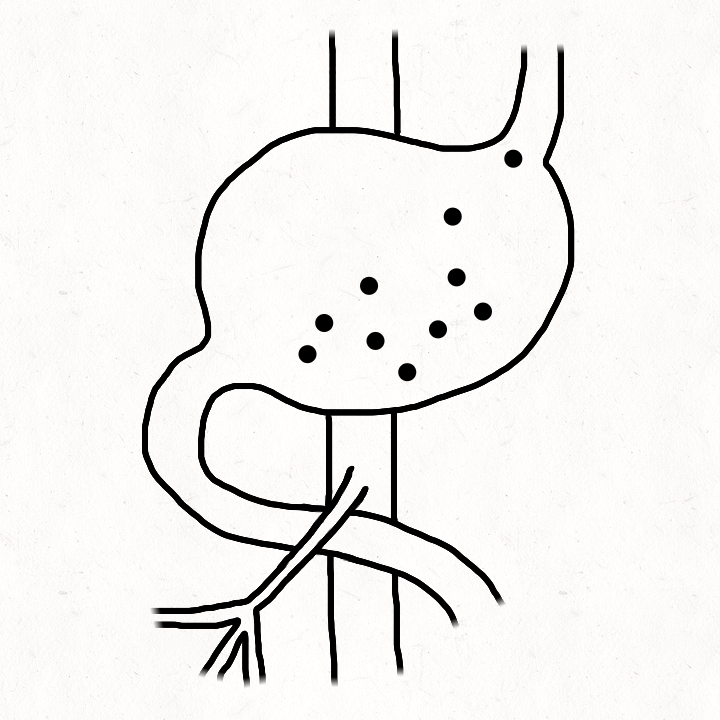What is Superior Mesenteric Artery Syndrome?

Superior Mesenteric Artery Syndrome (SMA Syndrome) is a rare digestive condition that occurs when the duodenum is compressed between the superior mesenteric artery and the aorta. This compression causes blockage in the duodenum.
Symptom severity varies broadly. This condition can be managed with minor changes to diet, or it can be severely debilitating.
Superior Mesenteric Artery Syndrome symptoms
Compression from the superior mesenteric artery constricts the duodenum, causing food to become stuck. This obstruction causes widening, inflammation, and damage to the small intestine. In severe cases, it may also cause damage to the stomach, bile duct, gall bladder, pancreatic duct, and pancreas.
Common symptoms include nausea, vomiting, weight loss, feelings of fullness while eating, bloating after meals, abnormal burping, and upper abdominal pain.
Cause
This can be a congenital condition (one that patients are born with), or it can be caused by trauma or other medical disorders.
In the human body, the duodenum (the first section of the small intestine) passes between the aorta and the superior mesenteric artery. In patients with Superior Mesenteric Artery Syndrome, these arteries may branch at a more acute (narrow) angle. Typically, the driving factor is the loss of the mesenteric fat pad that surrounds the superior mesenteric artery.
Because of the rarity of Superior Mesenteric Artery Syndrome, it is often diagnosed after more common conditions have been ruled out. This delay in diagnosis may result in significant complications, including death. It can also cause significant stress to the patient.
Of particular concern is the positive feedback loop of weight loss. As a patient loses weight, the mesenteric fat pad decreases, further exacerbating the compression of the duodenum.
Treatment
Treatment ranges from dietary changes (smaller portions, puréed food, liquid diet) to feeding tubes/intravenous (IV) nutritional support, to surgical intervention.
Non-surgical treatment methods that have been helpful for some patients include:
- reclining on the left side after eating
- eating fewer meals throughout the day
- walking to gently stimulate digestion at the first sign of discomfort
- avoiding fibrous foods (bell pepper skins, popcorn, herb stems)
- club soda or Alka Seltzer tablets
- avoiding intestinal irritants (alcohol, coffee, medicines in tablet form)
- prescription anticholinergics/antispasmodics (Hyoscyamine)
Check with your doctor before trying any home remedy.
Prognosis
SMA Syndrome can be severely debilitating, even resulting in death. This is particularly true if a diagnosis is delayed.
Read more about Superior Mesenteric Artery Syndrome
Review the research papers we’ve compiled, which detail medical breakthroughs and case studies from around the world.
SMA Syndrome is rare, but it has appeared in some recent headlines. We’ve compiled these news articles, which detail the struggles and triumphs of others who have been diagnosed with SMA Syndrome.
The National Organization for Rare Disorders provides a terrific overview of SMA Syndrome.
The Genetic and Rare Diseases Information Center, a division of the National Institutes of Health, provides an overview of SMA Syndrome.
The International Foundation for Functional Gastrointestinal Disorders has an overview of SMA Syndrome.